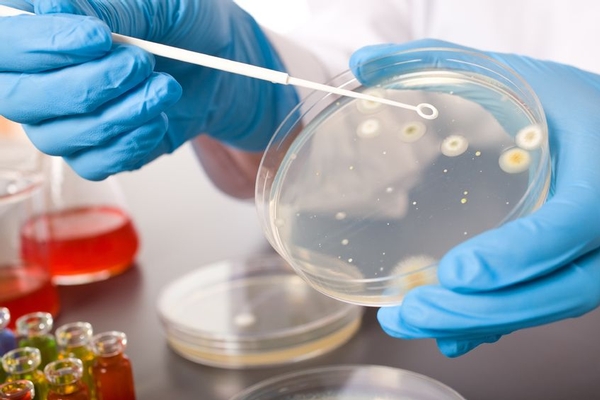When choosing a laboratory for your testing needs, there are many factors that will ensure a successful partnership. Laboratories compete with one another by offering novel methods, customer service claims and competing prices. But what do these factors mean for the client, and what aspects contribute to the overall quality of the results? When safety is concerned, making careful considerations about the quality and accuracy of results can make this a crucial decision for both you and your customer.
The type of product being tested will often determine the analyses available at a particular laboratory. Examples of tests frequently requested by clients in the fresh produce industry are indicator organisms––tests designed to indicate contamination, often of a fecal nature––such as generic Escherichia coli (E. coli) or total/fecal coliform testing. Additionally, samples may be tested for the presence of pathogens like Salmonella, Listeria monocytogenes, E. coli O157:H7 and Shiga toxin-producing E. coli (STEC)/enterohemorrhagic E. coli. Risk assessments, buyer requirements, outbreak data and beyond can all contribute to a decision to test with a laboratory. Historical data and trend analyses by commodity type and geographical region can also play a critical role in the testing of a product. But once the decision of what to test for is made, what methods are used to generate the result?
Where food is concerned––especially those of a perishable nature such as fresh produce–– turnaround time is one of the most important aspects to consider. Food producers and distributors are in a race against the clock with shelf life considerations and shipping logistics. Methodologies in use today by laboratories can directly impact the time-to-result based on multiple components. Keeping the idea of fresh produce in mind, many times the decision to go into the field and harvest or to ship a finished product is contingent on negative results. But as a grower, shipper or buyer, it is important to juggle the balance of getting expedited results and ensuring they are the correct result.
Advancements in technology and science have allowed the testing industry to provide options to combat this struggle between time and accuracy. By increasing sensitivity of the instruments in use, as well as the specificity of the assays or analysis, enrichment times and time-to-results can be shortened to less than a day versus several days or more when using previous methods such as cultural methodology or immunoassays. When testing for pathogens, methods typically require that a sample is enriched––meaning that it is allowed to grow under optimal temperatures with the correct nutrients to promote growth. If the organism is present, enrichment allows it to grow to a level where the instrument can detect its presence. More sensitive instruments allow the laboratory to shorten the enrichment timeframe and therefore provide results sooner. However, increasing sensitivity alone can cause problems.
Therefore, the method used in the lab should also be specific to the target organism. For example, if a sample is positive for Salmonella, the lab wants to be confident that it is truly a positive and that the instrument is not detecting something highly similar to Salmonella. If that similar organism is not a pathogen, the client can end up disposing of product unnecessarily and incurring high costs. When this scenario occurs, it is referred to as a “false positive”. Labs that use instruments with high specificity reduce the occurrences of these false positives. Coupling this specificity with an increased sensitivity allows the laboratory to provide accurate results to the customer.
From an outside perspective, it is important to understand the claims and limitations of the technology being used in the laboratory. Methods lacking sensitivity may not be able to provide accurate results if the enrichment time frame is not long enough. This can lead to what’s known as “false-negative” results, which are difficult to measure in real world samples. However, as a food safety professional, you are often tasked with making the decision on whether to release a product and you want to know that the results you receive are correct. Situations could arise where you release product based on negative results, when in fact, that sample is positive for a pathogen.
This all leads to transparency. Buyers of your product require you to provide documentation of all of your processes and to be transparent in what you are offering. A testing laboratory should be no different. When choosing a laboratory, ask to speak to the technical experts, but also the people who will be handling your sample. A transparent laboratory will allow you to visit and watch as your sample is processed. They will walk you through the technology being offered, including whether it has been validated on your product and answer any questions you have on the method’s approval(s). This will start your testing program on the right foot as you will build a relationship with the people who know exactly what is happening to your sample, which in turn builds confidence in your decision.
Recently, PrimusLabs transitioned to the Roka Bioscience Atlas System® for its pathogen testing. The Atlas System combines three technologies in an automated platform for the detection of Salmonella, Listeria species, L. mono, E. coli O157:H7 and STEC. This system combines the sensitivity and specificity discussed above to provide fast time-to-results and high accuracy. Additionally, with the automated nature of the platform, cross-contamination concerns are greatly diminished versus technologies requiring multiple touch-points or highly trained analysts to interpret results.
Adam Hughes is the assistant director of microbiology for Primus Labs.
Considerations for Testing with a Third-Party Laboratory



